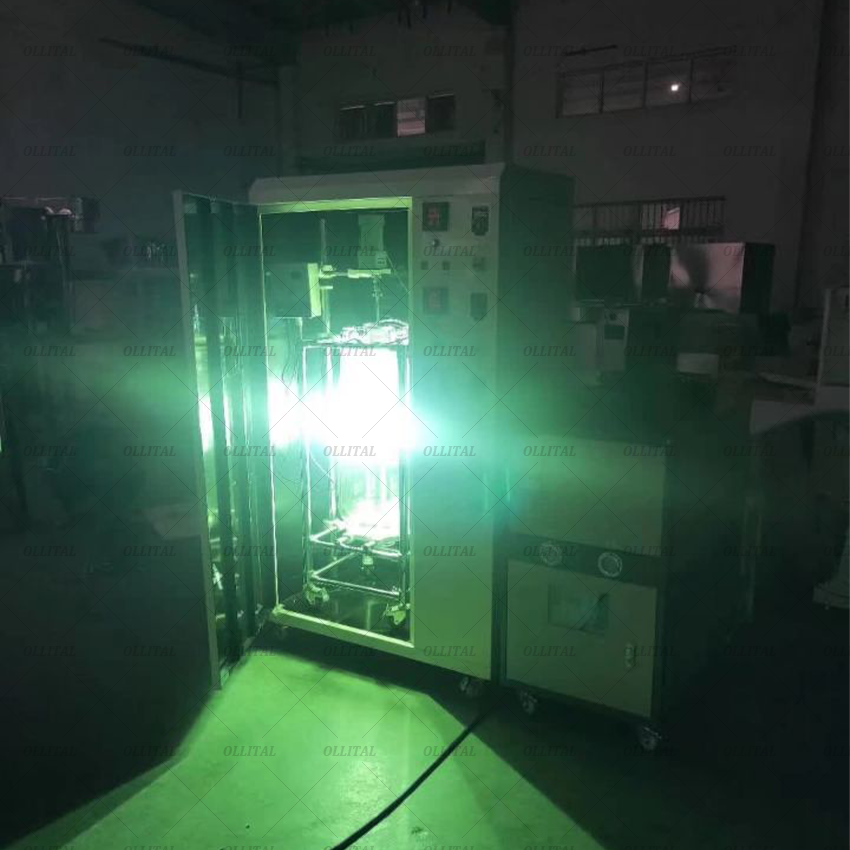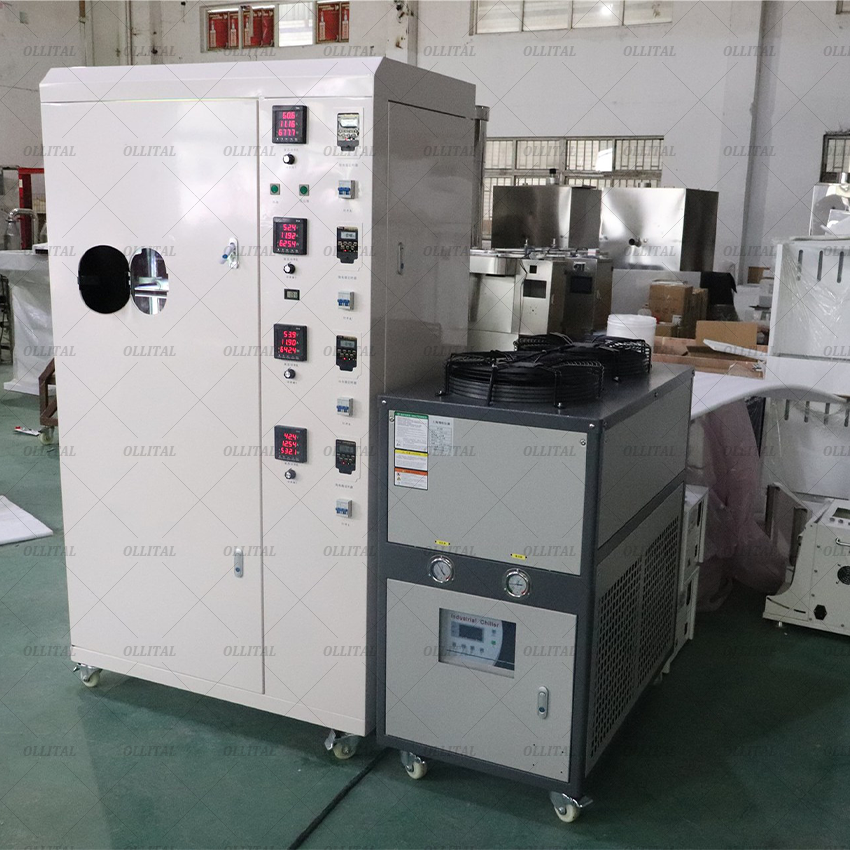As a cutting-edge laboratory equipment, the photochemical reactor provides an efficient and precise experimental platform for scientific research through its unique design concept. The photochemical reactor is a device used for photochemical reactions. It mainly uses light sources (such as ultraviolet rays, visible light, etc.) to stimulate chemical reactions. It is usually used in organic chemistry, materials science, environmental science and other fields. Its design can effectively control reaction conditions, such as temperature, pressure, light intensity, etc., to ensure the stability and repeatability of the reaction process. Through these sophisticated equipment configurations, researchers can adjust the reaction conditions according to different experimental needs to achieve the best experimental results.
Working Principle
The working principle of the photochemical reactor is based on photochemical reaction and optical measurement technology. Photochemical reaction is to cause chemical reaction of molecules in a chemical reaction by irradiating light. Under the action of light, the molecules absorbed by light energy are in an excited state and can participate in chemical reactions. Since light energy of different wavelengths can excite different types of molecules, specific chemical reactions can be regulated by appropriate light sources. Photochemical reactions need to go through the processes of light energy absorption, excitation of reactants, chemical reaction and formation of reactants.
Light energy absorption: A photochemical reactor usually contains a light source, which can be a UV lamp, laser or other light source. These light sources emit light energy of a specific wavelength, which is absorbed by the reactants in the reactor.
Excited reactants: When the reactants absorb light energy, their electronic energy levels are excited and jump to high energy levels. This process is called photoexcitation, and the reactants in the excited state have high reactivity.
Chemical reaction: The reactants in the excited state collide with other molecules at a high energy level, thereby initiating chemical reactions. These reactions can be photolysis, oxidation, reduction, polymerization and other types of reactions.
Reaction product formation: During the chemical reaction, the reactants in the excited state will gradually be exhausted and return to the ground state to produce reaction products. These products can be compounds, ions, free radicals, etc., and their generation is closely related to the absorption of light energy and chemical reactions.
Main components
Reactor: The reactor itself, usually made of corrosion-resistant materials such as quartz, glass or stainless steel.
Light source: Mainly ultraviolet light, visible light or other light sources of specific wavelengths, depending on the specific reaction.
Cooling device: Used in high light intensity conditions to prevent excessive temperature from affecting the reaction.
Agitator: Helps mix the reactants to ensure that the reaction proceeds evenly.
Control system: Used to monitor and adjust reaction conditions, including temperature, pressure, light intensity, etc.
Application areas
Photochemical reactor is an experimental device used to study photochemical reactions, photocatalytic processes, and photophysical phenomena. It can be used to measure and control light intensity, wavelength, and reaction conditions in order to study chemical reactions and material changes under different light conditions. photochemical reactors are widely used and cover many scientific and industrial fields. Here are some of the main applications:
1. Photocatalytic research
photochemical reactors are widely used to study photocatalytic reactions, such as water splitting to produce hydrogen, pollutant degradation, and CO₂ reduction. By controlling the wavelength and intensity of the light source, scientists can study the catalytic efficiency of different catalysts under different light conditions.
2. Photosynthetic process research
photochemical reactor are used to simulate and study plant photosynthesis. By adjusting the light parameters, researchers are able to gain insight into the energy conversion mechanism in photosynthesis and the effects of different light intensities and wavelengths on plant growth and metabolism.
3. Photosensitive material and device development
In the research and development of optoelectronic materials and devices (such as solar cells and photodetector), photochemical reactors are used to test the performance of these materials and devices under different light conditions. Researchers can evaluate the material's response to light of different wavelengths to optimize device design.
4. Photochemical reaction research
photochemical reactor are used to study chemical reactions that take place under light conditions. For example, some organic reactions can only be carried out effectively under the action of light, and photochemical reactors can precisely control the reaction environment to help researchers optimize reaction conditions.
5. Drug photostability testing
photochemical reactor are used in the pharmaceutical industry to test the stability of drugs under light conditions, especially the degradation rate and mechanism of drugs when exposed to light during storage and use.
6. Applications in environmental science
In environmental science, photochemical reactor can be used to simulate the effects of sunlight on pollutants in the air, water or soil to study their degradation behavior. This is of great significance to environmental protection and pollution control.
7. Biomedical field
photochemical reactors can be used in biomedicine to study photodynamic therapy (PDT), a treatment method that uses photosensitizers and light to kill cancer cells. By controlling the wavelength and intensity of light, doctors are able to target tumor tissue more effectively.
In general, photochemical reactor play a key role in laboratory research and industrial applications, especially in the study of chemical, physical and biological processes related to light, which provides precise and controllable light conditions.

